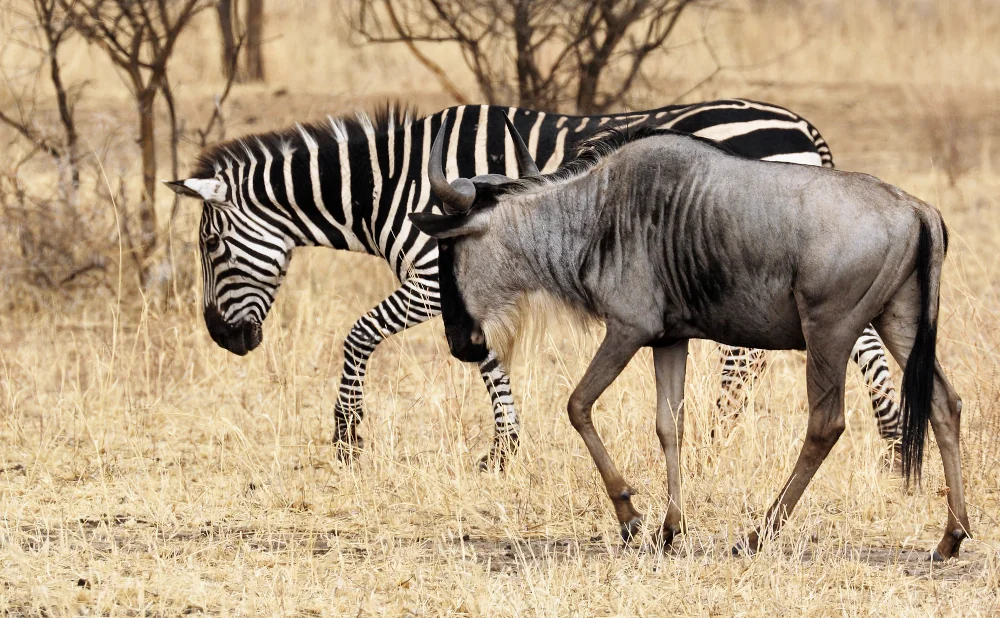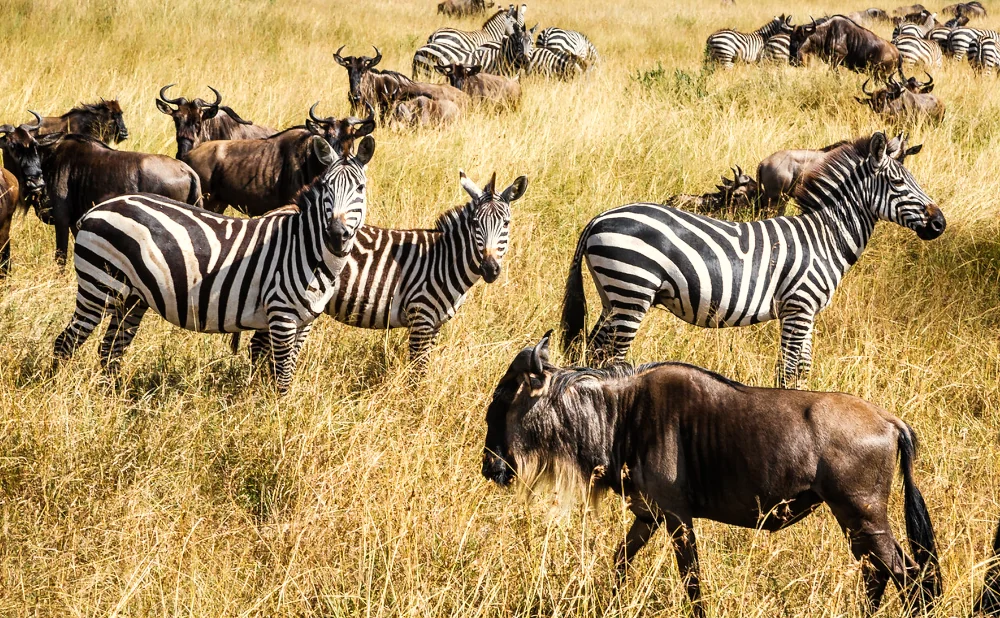Exploring the Biodiversity of Udzungwa National Park
Nestled in the heart of Tanzania, Udzungwa National Park is a treasure trove of biodiversity. Often referred to as the "Galapagos of Africa", it's a haven for nature enthusiasts and eco-tourists alike.
The park is home to a myriad of species, many of which are endemic to the area. From the endangered Udzungwa red colobus to the vibrant birdlife, the park teems with unique wildlife.
But it's not just the fauna that's impressive. The park's flora is equally captivating, with over 2,500 plant species adorning its landscape. The lush greenery ranges from tropical rainforest to montane forest, providing diverse habitats for its inhabitants.
Udzungwa National Park is also a vital water catchment area. It plays a crucial role in supporting the surrounding agricultural regions, highlighting its importance beyond its borders.
In this article, we'll delve into the rich biodiversity of Udzungwa National Park. We'll explore its unique flora and fauna, conservation efforts, and the role it plays within Tanzania's ecosystem. Join us on this journey as we uncover the wonders of this remarkable national park.
The Enigmatic Udzungwa: A Brief Overview
Udzungwa National Park, part of the Eastern Arc Mountains, spans approximately 1,990 square kilometers. Located in south-central Tanzania, it's a significant part of the country's natural heritage.
The park's elevation ranges from 250 meters to over 2,000 meters above sea level. This variation in altitude contributes to its diverse ecosystems, from grassland to heath to dense forest.
Udzungwa is part of a larger network of protected areas. These include the Selous Game Reserve and Mikumi National Park, further enhancing its ecological significance.
Managed by the Tanzania National Parks Authority (TANAPA), Udzungwa is a testament to the country's commitment to conservation and biodiversity preservation.
A Haven for Endemic Species
Udzungwa National Park is renowned for its high level of biodiversity and endemism. It's often referred to as the "Galapagos of Africa," a testament to its unique flora and fauna.
The park is home to over 400 bird species. Some of these are endemic to the area, making it a paradise for birdwatchers and ornithologists.
Udzungwa also hosts more than a dozen primate species. Among them are the endangered Udzungwa red colobus and Sanje mangabey, which are a sight to behold.
The park's flora is equally impressive, with over 2,500 plant species. New species are still being discovered, underscoring the park's rich botanical diversity.
Key endemic species include:
- Udzungwa red colobus
- Sanje mangabey
- Numerous bird species
- Over 2,500 plant species
Udzungwa's isolation has led to high species specialization and unique evolutionary paths. This makes it a fascinating destination for nature enthusiasts and researchers alike.
The Rich Tapestry of Habitats
Udzungwa National Park boasts a diverse range of habitats. These range from rainforest at lower altitudes to montane forest at higher elevations.
The park's diverse ecosystems also include grassland, heath, and dense forest. This variety of habitats supports a wide range of ecological niches.
The park's elevation ranges from 250 meters to over 2,000 meters above sea level. This gradient allows for the study of climate change impacts on biodiversity.
Udzungwa's landscape, characterized by steep ridges and narrow valleys, offers panoramic views of the surrounding area. It's a testament to the park's natural beauty and diversity.
Avian Wonders: Birdlife in Udzungwa
Udzungwa National Park is a paradise for bird lovers. It is home to over 400 bird species, some of which are endemic to the area.
The park's fruiting trees attract numerous bird species. These include both resident and migratory birds, adding to the park's colorful biodiversity.
Birdwatching is a popular activity in the park. The park's trails offer excellent opportunities for birdwatching, photography, and nature study.
Udzungwa's ongoing biodiversity assessments help inform conservation strategies. These strategies aim to protect the park's rich avian life.
Primates of Udzungwa: Our Closest Cousins
Udzungwa National Park is a sanctuary for primates. It is home to more than a dozen primate species.
Among these species are the endangered Udzungwa red colobus and Sanje mangabey. These primates are endemic to the area, making them unique to Udzungwa.
The park's diverse ecosystems provide ideal habitats for these primates. From dense forests to grasslands, these habitats support a complex food web.
The park's conservation efforts include anti-poaching patrols. These efforts aim to protect the park's primate populations from threats.
Conservation Efforts and Challenges
Udzungwa National Park faces several conservation challenges. These include deforestation, poaching, and human-wildlife conflict.
The park's management, led by the Tanzania National Parks Authority (TANAPA), is working to address these issues. They implement various conservation strategies, including anti-poaching patrols and community outreach programs.
The park's ongoing biodiversity assessments also play a crucial role. These assessments help inform conservation strategies and ensure the park's long-term preservation.
Despite these challenges, Udzungwa's future depends on both global and local conservation efforts. The park's role in the larger ecosystem highlights the interconnectedness of all life.
Experiencing Udzungwa: Hiking and Trekking Trails
Udzungwa National Park offers various hiking trails. These range from short walks to multi-day treks.
The trails provide opportunities for birdwatching, photography, and nature study. They also offer panoramic views of the surrounding area.
Here are some of the park's most popular trails:
- Sanje Waterfall Trail: This trail leads to the park's most famous attraction, the Sanje Waterfall.
- Mwanihana Trail: A multi-day trek that takes you to the park's second-highest peak.
- Prince Bernhard Trail: A short, easy trail perfect for families or those with limited time.
The park's trails are maintained to minimize environmental impact while providing access to its wonders.
When to Visit and What to Bring
Udzungwa National Park is accessible year-round. However, the best time to visit is during the dry season from June to October.
During this period, the trails are less muddy. The visibility for wildlife viewing is also better.
Here are some essentials to bring:
- Comfortable hiking shoes: The trails can be steep and rugged.
- Binoculars: For birdwatching and wildlife viewing.
- Water and snacks: There are no shops within the park.
- Rain gear: Weather can be unpredictable, even in the dry season.
Remember, the park's visitor guidelines emphasize respect for wildlife and natural resources.
Udzungwa's Role in Local Culture and Beyond
Udzungwa National Park plays a significant role in local culture. Many of the park's plants are used in traditional medicine by local communities.
The park also includes sacred natural sites. These sites are integral to the spiritual practices of the local Hehe tribe.
Moreover, Udzungwa offers educational programs for local schools. These programs focus on conservation and the importance of biodiversity.
Beyond local culture, Udzungwa's biodiversity contributes to global scientific knowledge. The park's unique species and ecosystems provide valuable insights into evolution and ecology.
Conclusion: The Importance of Udzungwa's Biodiversity
Udzungwa National Park is a treasure trove of biodiversity. Its unique species and ecosystems are a testament to the richness of life on Earth.
The park's conservation status helps protect this biodiversity. It ensures the survival of species found nowhere else on the planet.
However, the future of Udzungwa's biodiversity depends on ongoing conservation efforts. Both local and global actions are needed to safeguard this natural heritage.
In conclusion, Udzungwa's biodiversity is not just a source of natural beauty. It is a vital part of our planet's ecological balance and a testament to the wonders of evolution











